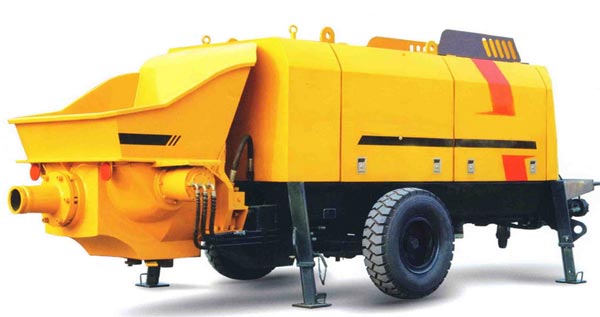A concrete pump is the construction machinery used for transferring liquid concrete by using the pumping mechanism. There are varied types of concrete pumps distinguished based on the additional attachments that come as part of the pump. The most commonly used and simplest concrete pumps are the stationary concrete pumps. The stationary concrete pumps are on a trailer and requires attaching a separate pipeline so as to reach the concrete placement location. The equipment that accompanies the concrete pump includes the transport, a boom and a truck mixer.
With the increase in technology, the use of the traditional crane-bucket concrete pouring and stationary concrete pumps is decreasing, and the mobile concrete pumps for sale are becoming popular. The mobile concrete pumps incorporate both a concrete pump as well as a boom mounted on the chassis of a truck. A boom is a remote controlled robotic arm that aids in placing the concrete accurately.

The Working of the Mobile Concrete Pump
The basic principle of working of all types of concrete pumps is the same. The pump operates on the basis that one piston draws liquid concrete from a hopper into a cylinder while the other piston pushes its concrete out into the discharge pipes, both the functions happening simultaneously. There is a valve that controls which cylinder opens to the concrete hopper and which one opens to the discharge pipes. The valve switches every time the pistons reach the end point, and the process goes on with the first cylinder now releasing the concrete and the second cylinder drawing fresh concrete from the hopper.
Need for Concrete Pumping
All the construction structures, from the tallest skyscrapers to the smallest houses require concrete. Concrete pumping has greatly helped the construction industry.
Benefits of a Mobile Concrete Pump
Mobile concrete pumps are a more efficient way of pouring concrete.
Faster Placement
The advantage of the small portable concrete pumps over the traditional crane and bucket system is that it can pump concrete faster and it also provides a continuous supply of concrete to the top of the buildings.
Less Labour
The traditional crane and bucket system for pouring concrete require a lot of labour work. Also, in the case of stationary concrete pumps a separate pipeline needs to be attached each time and is a very cumbersome task. The mobile concrete pumps need no such manual connections and can directly start pumping concrete as soon as it reaches the construction site. Thus, these pumps allow pumping of high volumes of concrete quickly to wherever required with minimum labour requirements. In addition, the boom in a mobile concrete pump enables a quick and precise placement of the concrete over a wide area. To learn more details, you can visit this website: http://www.concretemixerpump.net/portable-concrete-pump/35.html.
Improved Concrete
Concrete pumping requires less water as compared to other methods of placing concrete. Hence, it avoids cracking of the concrete and increases the strength of the concrete.
Placement Accuracy
With the presence of the boom on a mobile concrete pump and the appearance of mobile concrete mixer and pump the accuracy of the placement of the concrete increases.
Conclusion
The construction industry is always searching for means to making the construction process more efficient and effective. The use of mobile concrete pumps has helped to make incredible progress in the construction industry.